Kanpachi Sushi
A Comprehensive Overview of Greater Amberjack in Japanese Sushi Cuisine
カンパチすし 、 間八(勘八)寿司 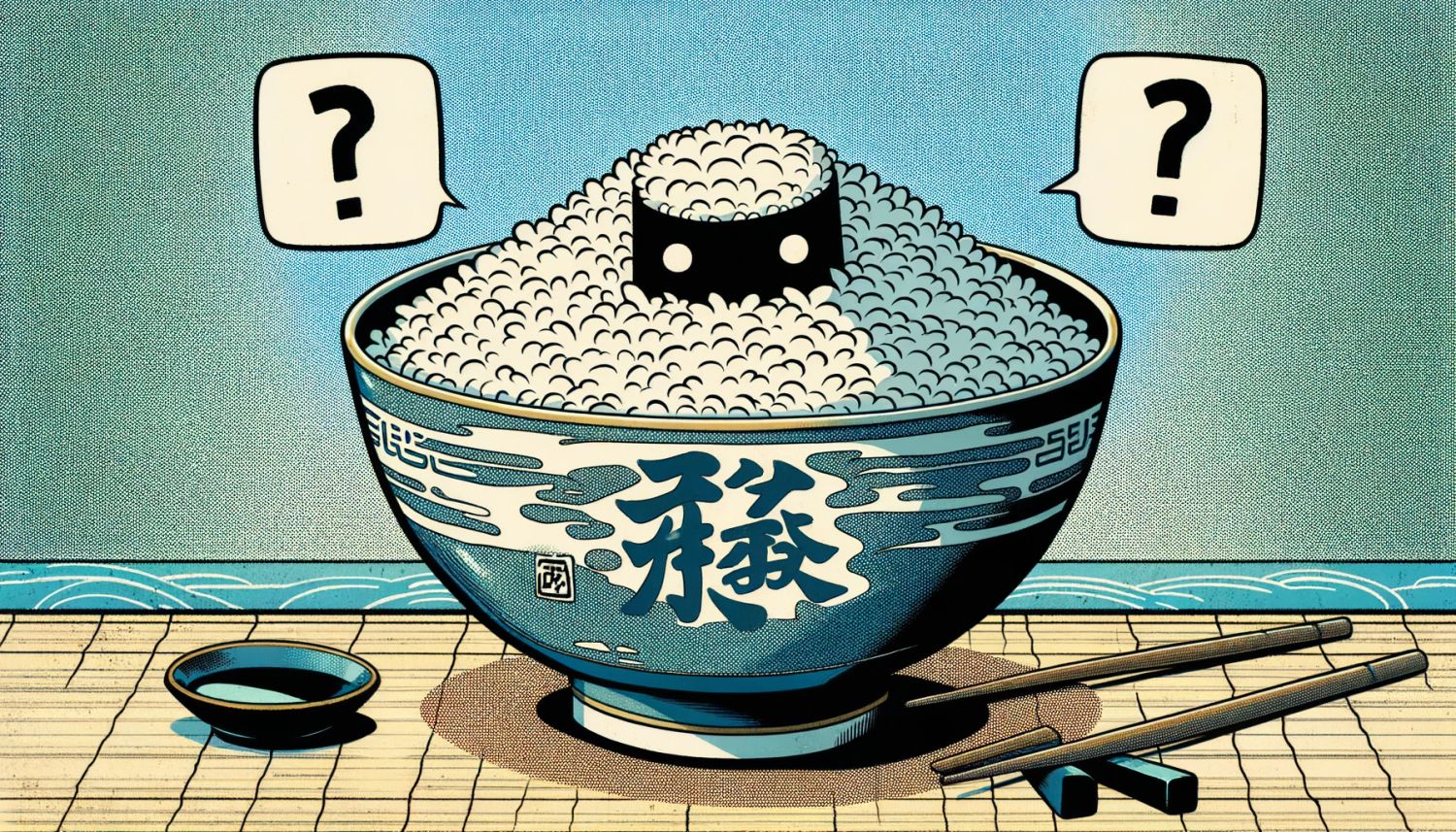
What is Kanpachi?
The greater amberjack, whose Japanese name is kanpachi, is a species of saltwater fish found in all the world's oceans. It is considered a high-quality food fish and is counted among the “three big yellowtails” (buri gosanke) alongside buri and hiramasa.
Kanpachi for Sushi and Sashimi
Kanpachi exhibits a more refined and nuanced flavor profile compared to its relative, buri. Wild-caught specimens present a firmer texture, necessitating thinner slicing to fully appreciate their quality. These wild variants typically contain less fat, resulting in visibly darker flesh. Upon consumption, one first detects kanpachi's subtle aroma. The flesh color ranges from a delicate pink to a creamy white, depending on the specific cut. Kanpachi's distinguishing characteristic lies in its rich umami flavor, attributable to its relatively high fat content. This harmonious balance of delicacy and richness establishes kanpachi as a premier choice among discerning sushi enthusiasts.
The combination of its mild aroma, variable coloration, and pronounced umami taste renders kanpachi a sought-after delicacy in Japanese cuisine.
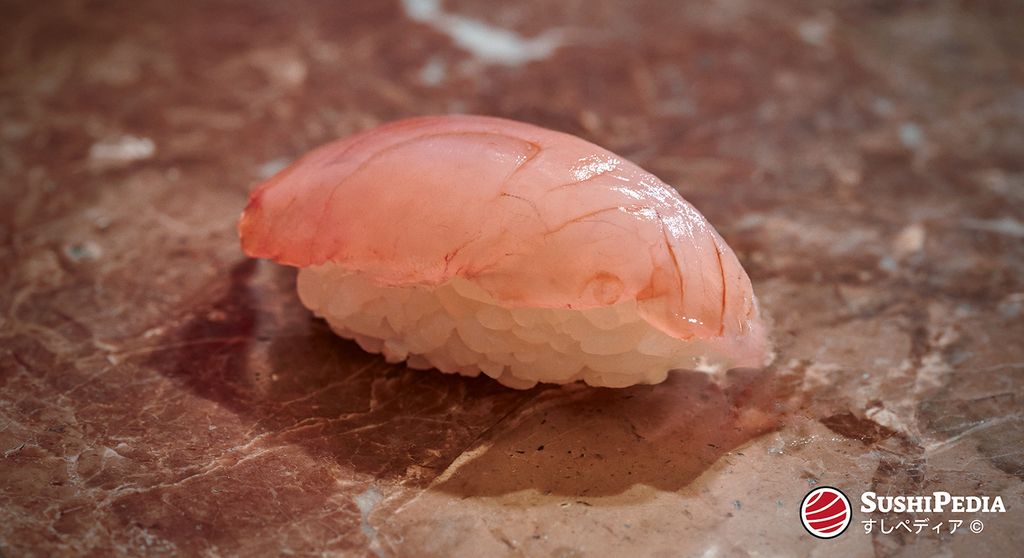
SushiPedia. Kanpachi Nigiri Sushi. All rights reserved ©
Best Season for Kanpachi
The season extends from summer to fall. Recently, aquaculture has intensified, so most market products now come from farms. The availability of farmed kanpachi allows for sourcing this fish in good quality even outside its natural fishing season.[1]
Kanpachi in Japan
The Japanese name kanpachi 間八 originates from the characteristic, slanted band over the fish's eyes. From the front and above, this band resembles the traditional Japanese character 八 (hachi) for the number “eight.”
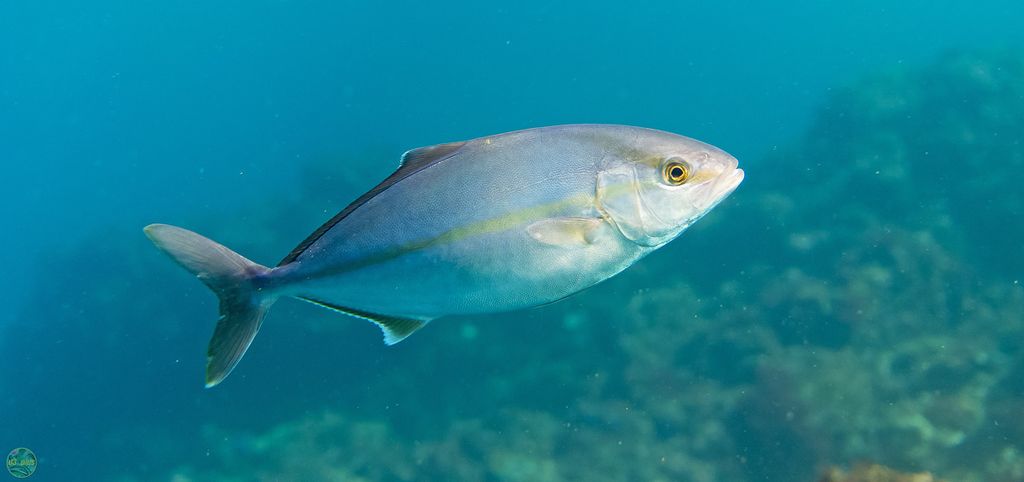
成瀬 大志 (Daishi Naruse), d3_plus. カンパチ, Great Amberjack. All rights reserved ©
In Japan, the catch quotas for kanpachi are lower than for buri or hiramasa, making it particularly sought after. Farmed kanpachi from Kagoshima Prefecture, located at the southwestern tip of Kyūshū Island, has a very good reputation. The picturesque Kagoshima Bay 鹿児島湾, also known as the magnificent Kinko Bay 錦江湾, provides ideal conditions for kanpachi aquaculture. The Japanese word “kinko,” which can be translated as “magnificent bay,” captures the exceptional aesthetics and natural wealth of this region. This designation highlights the appreciation and natural beauty of the fertile conditions that make the bay a central hub for fishing, aquaculture, and other maritime activities. The waters are characterized by relatively high temperatures and a high oxygen content, conditions considered ideal for raising kanpachi. The farming of this sought-after fish began here in the early 1960s and saw significant growth in the 1980s.[2]
A Fish That Changes Its Name
Until the Edo period, it was customary for samurai and scholars to change their names upon reaching adulthood and being promoted.[3] The Japanese term shusseuo, which originates from this custom, refers to fish whose names change as they grow, as if they were rising in rank. These fish are considered lucky charms and are used as ingredients for dishes at happy occasions. Kanpachi is one of these fish. It is a fast-growing fish, so its commercial value and taste increase with size, or age.
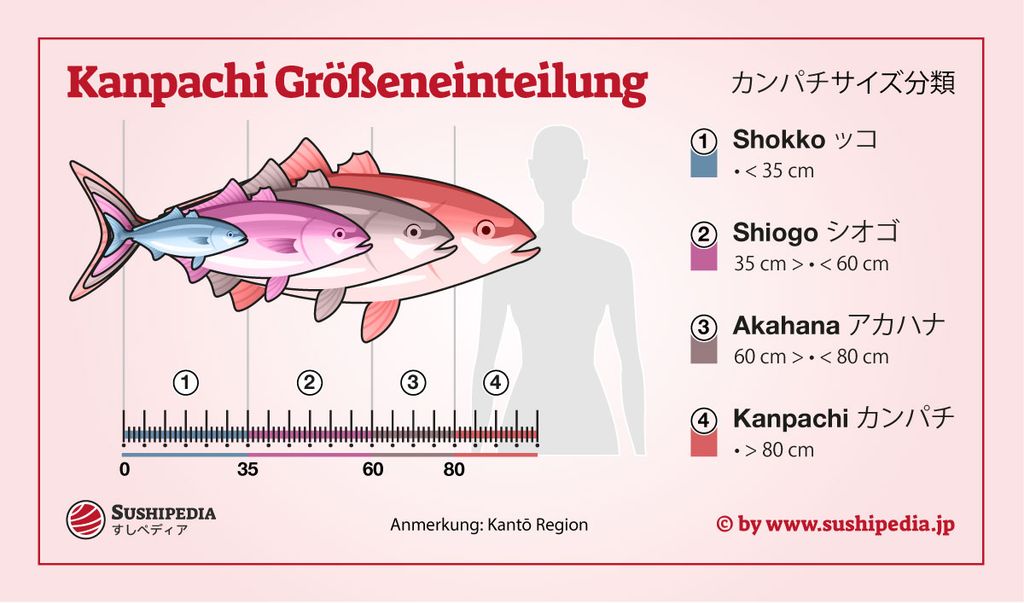
SushiPedia. Kanpachi and its names in Japan. All rights reserved ©
Characteristics and Ecology of Kanpachi
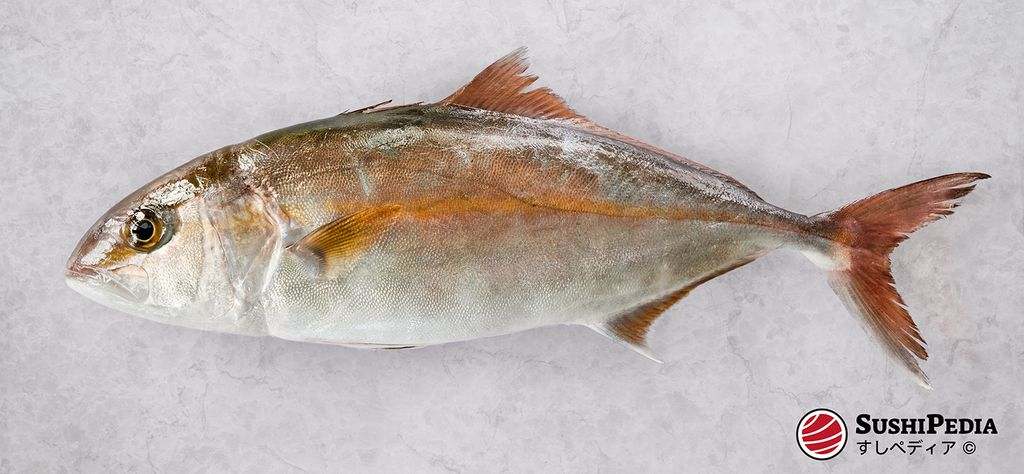
SushiPedia. Greater amberjack. All rights reserved ©
Kanpachi, also known as the greater amberjack, is found almost worldwide in subtropical and tropical seas and oceans. These fish usually inhabit depths of 18 to 72 meters, though specimens have been observed at depths of 360 meters.[4] As opportunistic predators, their diet primarily consists of other fish, particularly mackerel, and invertebrates.[5] Typically, they reach a size of 80 to 127 cm, with the largest recorded specimen measuring 190 cm.[6]
Kanpachi is often confused with hirenaga kanpachi (Seriola rivoliana). Both fish are closely related and also very similar in appearance.
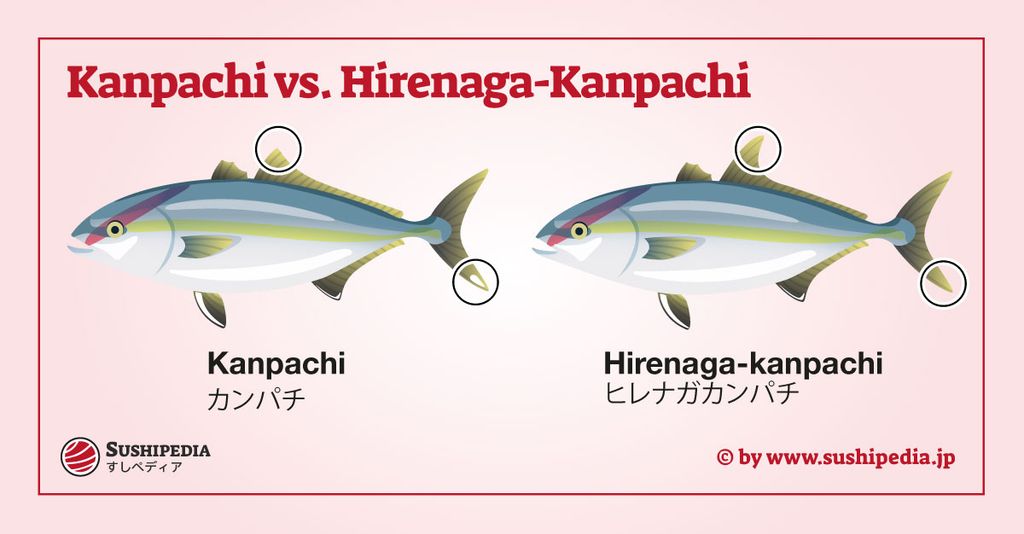
SushiPedia. Kanpachi versus Hirenaga-Kanpachi. All rights reserved ©
The length of the dorsal fins varies greatly from individual to individual but can be determined by the general shape. If the tip of the lower lobe of the tail fin is white, it is kanpachi; if it is not white, it is hirenaga kanpachi.[7]
Season Calendar for Kanpachi
The calendar shown does not provide information on fishing times, but marks the periods in which kanpachi is considered particularly tasty.
Species of Kanpachi
The following species are regarded as authentic kanpachi. Either historically, according to the area of distribution or according to the common practice in today's gastronomy:
Sources and Further Reading
- [1]『カンパチ【八面六臂】』. Hachimenroppi Inc.. Source retrieved 10/31/2022
- [2]Gourmet Kyushu. Kinko Bay's Kanpachi: Fresh, Mineral-Rich Premium Fish from Kagoshima. Minami Suisan Kanpachiya, Kyushu Tourism Organization. Source retrieved 10/31/2022
- [3]蓮実香佑. 『なぜ「烏」という漢字は「鳥」より一本足りないの?』. 2011
- [4]Randall, J.E. Coastal fishes of Oman. University of Hawaii Press, Honolulu, Hawaii. 1995
- [5]Whitehead, P.J.P.; Bauchot, M.-L.; Hureau, J.-C.; Nielsen, J.; Tortonese, E. (Ed.). Fishes of the north-eastern Atlantic and the Mediterranean, vol. 2. UNESCO, Paris. 1986
- [6]W. Fischer, M. Schneider, M.L. Bauchot. Guide Fao d'Identification des Espèces pour les Besoins de la Pêche Méditerranée et Mer Noire - Zone de Pêche 37 Volume 2: Vertébrés (Fao Guide to Species Identification for Fisheries Fishing Needs Mediterranean and Black Sea - Fishing Area 37 Volume 2: Vertebrates). Commission des Communautés Européennes and FAO, Rome.. 1987
- [7]西川 守(にしかわ まもる). 『-第8回- カンパチとヒレナガカンパチ (- Part 8 - Kanpachi and Hirenaga-Kanpachi)』. 2021. Source retrieved 10/31/2022
- 蒲原 稔治. 『エコロン自然シリーズ 魚』. 保育社. 1996
- IUCN Red List of Threatened Species. Version 2023-1
Image Credits
- SushiPedia. Kanpachi versus Hirenaga-Kanpachi. All rights reserved ©
- SushiPedia. Kanpachi Nigiri Sushi. All rights reserved ©
- SushiPedia. Greater amberjack. All rights reserved ©
- SushiPedia. Kanpachi and its names in Japan. All rights reserved ©
- SushiPedia. All rights reserved ©
- 成瀬 大志 (Daishi Naruse), d3_plus. カンパチ, Great Amberjack. All rights reserved ©